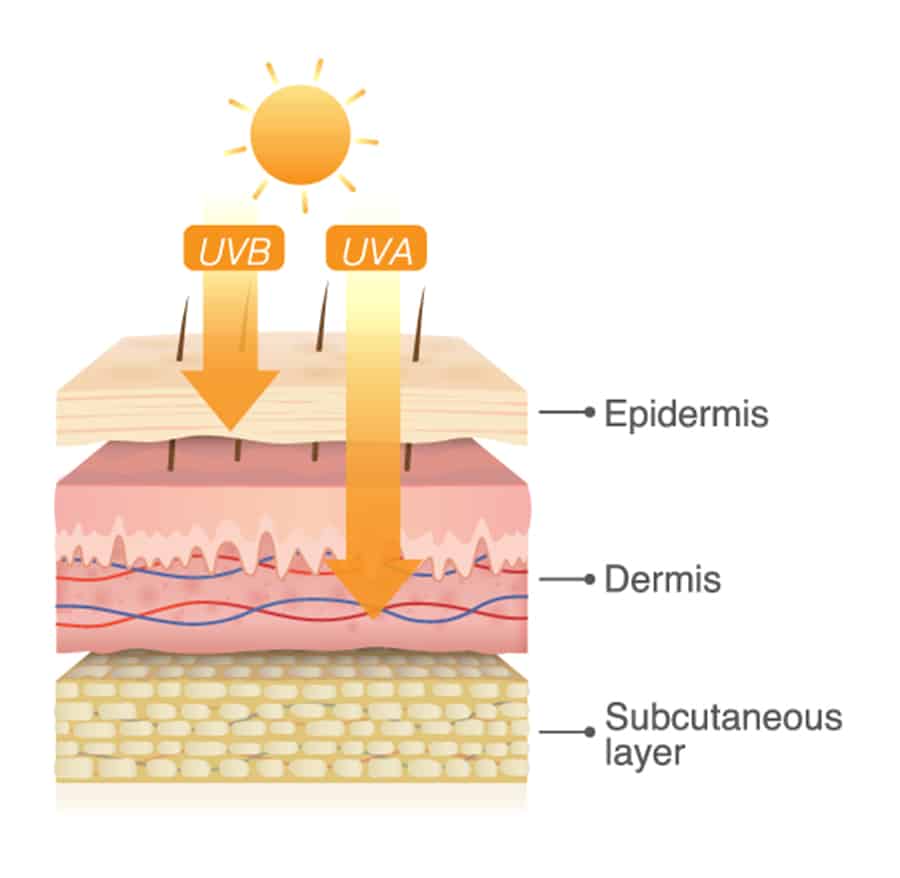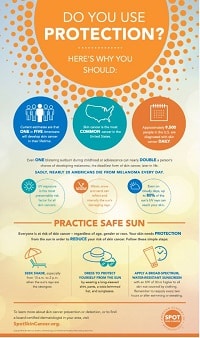Ultraviolet Safety Awareness Month
Be smart this summer and throughout the year by protecting your skin from ultraviolet (UV) rays. Sunlight is the main source of UV radiation. UV rays emitted by the sun are divided into 3 main groups UVA, UVB, and UVC rays. Both UVA and UVB rays are the primary cause of skin cancer. UVA rays are associated with skin aging and long-term skin damage such as wrinkles. UVB rays have slightly more energy than UVA rays and are associated with sunburns. Other than just affecting your skin, excessive exposure to UV rays from sunlight may also cause vision impairment, cataracts, and eyelid cancers. Additionally, exposure to UV rays may suppress the immune system making it harder to fend off infections.
The most important thing to know is that sun exposure plays a strong role in the development of skin cancer. The most common types of skin cancers are called basal and squamous cell carcinomas. These are typically found on sun-exposed areas of the body. The risk of melanoma, a more dangerous but less common type of skin cancer, is also associated with UV exposure, but to a lesser degree than basal and squamous cell carcinomas. It is great to be active and enjoy the outdoors! But, we encourage you to do so safely by taking precautions against strong UV exposure.


The strength of UV rays and carcinogenic damage depends on a number of factors. The amount of sun damage depends on the strength of the UV rays, length of time exposed, and whether the skin is protected with clothing or sunscreen. The strongest rays are from 10am-4pm, during spring and summer months, at latitudes closer to the equator, at higher elevations, and from reflections off of surfaces like water, snow, sand, and pavement. So if you are out and about in these conditions it is best to protect yourself.
To protect against UV-induced skin cancer, the American Academy of Dermatology recommends a comprehensive sun protection plan that includes seeking shade, wearing protective clothing, and applying a broad-spectrum, water-resistant sunscreen with an SPF of 30 or higher.
At Illustra Dermatology we encourage all patients to safeguard against UV exposure everyday. See more information about smart sun protection at https://www.skincancer.org/skin-cancer-prevention/sun-protection/


